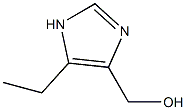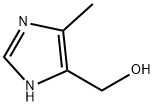Cysteamine hydrochloride
Synonym(s):β-Mercapto-ethylamine hydrochloride;2-Amino-ethane-thiol hydrochloride;2-Aminoethanethiolhydrochloride, Cysteamine hydrochloride, 2-Mercaptoethylamine hydrochloride;2-Mercapto-ethyl-amine hydrochloride;Cysteaminium chloride
- CAS NO.:156-57-0
- Empirical Formula: C2H8ClNS
- Molecular Weight: 113.61
- MDL number: MFCD00012904
- EINECS: 205-858-1
- SAFETY DATA SHEET (SDS)
- Update Date: 2025-12-25 12:42:02

What is Cysteamine hydrochloride?
Description
Cysteamine is a stable aminothiol with radioprotective activities. It reduces ionizing radiation-induced death and chromosomal damage in mice in a dose-dependent manner. Cysteamine binds rapidly and temporarily to plasma proteins upon administration and this activity is directly correlated to its radioprotective effects. In vitro, 0.1 mM cysteamine depletes 90% of free cystine from cystinotic fibroblasts. Formulations containing cysteamine have been used to treat nephropathic cystinosis and reduce glomerular deterioration in humans.
Chemical properties
White Solid
The Uses of Cysteamine hydrochloride
Cysteamine hydrochloride has been used in the in-situ generation of chiral cysteamine-capped cadmium sulfide quantum dots (CA-CdS QDs) for the sensing of Cd2+ and S2-.
The Uses of Cysteamine hydrochloride
Cysteamine hydrochloride is used as an antioxidant and in radiation therapy.
The Uses of Cysteamine hydrochloride
An inhibitor of DMBA-induced mammary tumors2-Mercaptoethylamine hydrochloride acts as a precursor in taurine biosynthesis and component of coenzyme A. It is involved in the preparation of active pharmaceutical ingredients like ranitidine and nizatidine. It acts as an antidote for acetaminophen poisoning. Further, it is used in the oral treatment of nephropathic cystinosis, radiation sickness and disorders of cysteine excretion. In addition to this, it serves as an antioxidant and an inhibitor of 7,12-Dimethylbenz[a]anthracene (DMBA)-induced tumors.
What are the applications of Application
Cysteamine Hydrochloride is an antioxidant and an inhibitor of DMBA-induced tumors
General Description
Cysteamine is an aminothiol that can reduce important oxidized disulfide molecules such as cystine to yield cysteine.
Hazard
Toxic by inhalation and ingestion.
Biochem/physiol Actions
Cysteamine is an aminothiol that can reduce important oxidized disulfide molecules such as cystine to yield cysteine. Cysteamine is used in a wide range of applications from regulation of gene expression, to depletion of somatostatin, to coating of nanoparticles.
Synthesis
In particular to synthesizing cysteamine hydrochloride in alkali surroundings, which is characterized in that ethanolamine solution and sulfate solution are used as raw material; 2- amino ethyl sulfate is firstly synthesized before made into ring in alkaline solution by 2-amino ethyl sulfate and carbon disulfide, thereby getting Alpha -mercaptothiazoline; alkaline hydrolysis is made upon Alpha -mercaptothiazoline to produce cysteamine hydrochloride.
Purification Methods
Purify the salt by recrystallisation from EtOH. It is freely soluble in H2O and should be stored in a dry atmosphere. [Mills & Bogert J Am Chem Soc 62 1177 1940.] The picrate has m 125-126o; see previous entry for free base. [Beilstein 4 IV 1570.]
Properties of Cysteamine hydrochloride
| Melting point: | 67-71 °C |
| Boiling point: | 238.5℃[at 101 325 Pa] |
| Density | 0.75 |
| vapor pressure | 5.333Pa at 25℃ |
| refractive index | 1.6100 (estimate) |
| storage temp. | 2-8°C |
| solubility | H2O: 1 m at 20 °C, clear, colorless |
| form | Crystalline Powder or Pellets |
| color | White |
| PH | 3.3-5.0 (400g/l, H2O, 20℃) |
| Water Solubility | VERY SOLUBLE |
| Sensitive | Hygroscopic |
| λmax | λ: 280 nm Amax: ≤0.3 |
| Merck | 14,2779 |
| BRN | 3590083 |
| Stability: | Stable, but hygroscopic. Incompatible with strong oxidizing agents. |
| CAS DataBase Reference | 156-57-0(CAS DataBase Reference) |
| EPA Substance Registry System | Cysteamine hydrochloride (156-57-0) |
Safety information for Cysteamine hydrochloride
| Signal word | Warning |
| Pictogram(s) |
 Exclamation Mark Irritant GHS07 |
| GHS Hazard Statements |
H302:Acute toxicity,oral H317:Sensitisation, Skin H319:Serious eye damage/eye irritation H335:Specific target organ toxicity, single exposure;Respiratory tract irritation |
| Precautionary Statement Codes |
P261:Avoid breathing dust/fume/gas/mist/vapours/spray. P264:Wash hands thoroughly after handling. P264:Wash skin thouroughly after handling. P280:Wear protective gloves/protective clothing/eye protection/face protection. P301+P312:IF SWALLOWED: call a POISON CENTER or doctor/physician IF you feel unwell. P302+P352:IF ON SKIN: wash with plenty of soap and water. P305+P351+P338:IF IN EYES: Rinse cautiously with water for several minutes. Remove contact lenses, if present and easy to do. Continuerinsing. |
Computed Descriptors for Cysteamine hydrochloride
| InChIKey | OGMADIBCHLQMIP-UHFFFAOYSA-N |
Cysteamine hydrochloride manufacturer
JSK Chemicals
New Products
4,4-Difluoropiperidine hydrochloride tert-butyl 9-methoxy-3-azaspiro[5.5]undecane-3-carboxylate Indole Methyl Resin N-Isopropylurea N,N-Dicyclohexylcarbodiimide(DCC) MELDRUMS ACID 5-METHYLISOXAZOLE-4-CARBOXYLIC ACID Magnessium Bis glycinate Zinc ascorbate 1-bromo-2-butyne 2-acetamidophenol 9(10H)-anthracenone Erythrosin B, 4-Piperidinopiperidine 2-((4-morpholinophenylamino) (methylthio) methylene) malononitrile 2,4-dihydroxybenzaldehyde 3-(4-morpholinophenylamino)-5-amino-1H-pyrazole-4-carbonitrile Methyl 2-methylquinoline-6-carboxylate 2,6-dichloro-4-nitropyridine 4-Bromo-2-chlorobenzonitrile 2-(benzylamino)acetic acid hydrochloride 4-(tert-Butoxycarbonylamino)but- 2-ynoic acid 3,4-dihydro-2H-benzo[b][1,4]dioxepine 1-Phenyl-1-cycloprppanecarboxylicacidRelated products of tetrahydrofuran







![4-[[(2-aminoethyl)thio]methyl]-5-methylimidazole](https://img.chemicalbook.in/CAS/GIF/38585-67-0.gif)
You may like
-
 Cysteamine hydrochloride CAS 156-57-0View Details
Cysteamine hydrochloride CAS 156-57-0View Details
156-57-0 -
 2-Aminoethanethiol Hydrochloride CAS 156-57-0View Details
2-Aminoethanethiol Hydrochloride CAS 156-57-0View Details
156-57-0 -
 CYSTEAMINE HYDROCHLORIDE For Synthesis CAS 156-57-0View Details
CYSTEAMINE HYDROCHLORIDE For Synthesis CAS 156-57-0View Details
156-57-0 -
 Cysteamine hydrochloride CAS 156-57-0View Details
Cysteamine hydrochloride CAS 156-57-0View Details
156-57-0 -
 Cysteaminium chloride CAS 156-57-0View Details
Cysteaminium chloride CAS 156-57-0View Details
156-57-0 -
 Cysteamine HydrochlorideView Details
Cysteamine HydrochlorideView Details
156-57-0 -
 Cysteamine Hydrochloride.View Details
Cysteamine Hydrochloride.View Details
156-57-0 -
 Cysteamine HydrochlorideView Details
Cysteamine HydrochlorideView Details
156-57-0
